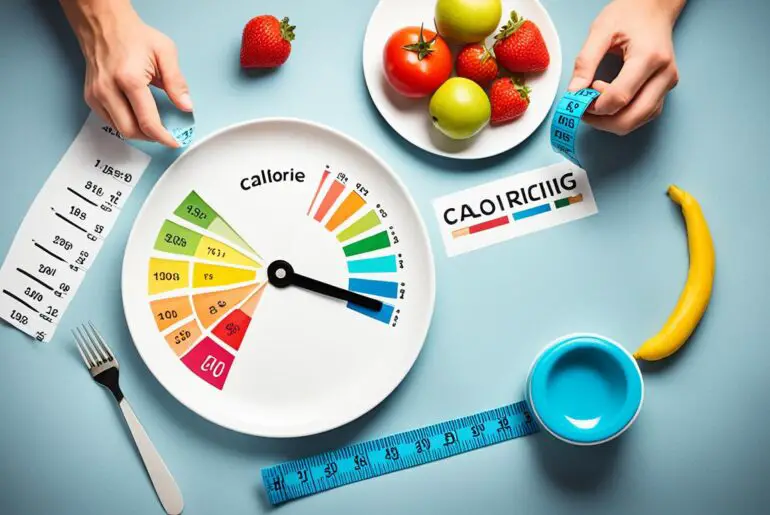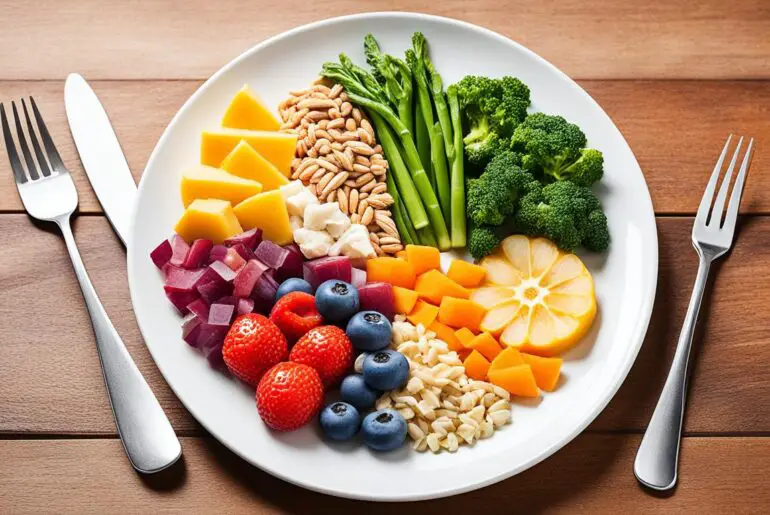Are you struggling to shed those stubborn pounds? Are you tired of diets that promise quick results but leave you feeling hungry and unsatisfied? Look no further than the HCG Diet Phase 2. This phase of the HCG weight loss protocol has been praised for its ability to help individuals achieve significant weight loss, all while consuming a mere 500 calories per day. But how can such a low-calorie diet lead to successful and sustainable weight loss? And what exactly does this phase entail? Let’s dive in and uncover the answers.
During the HCG Diet Phase 2, you will consume a restricted number of calories while using the HCG hormone nasal spray. This hormone plays a crucial role in releasing stored fat for energy, while also curbing appetite. By strictly following the specified calorie guidelines and avoiding any foods that are not listed, you can tap into your body’s fat stores and achieve significant weight loss.
Key Takeaways:
- The HCG Diet Phase 2 involves consuming only 500 calories per day.
- The HCG hormone nasal spray helps release stored fat for energy and reduces appetite.
- Strict adherence to the specified calorie guidelines and the recommended foods is crucial for optimal results.
- Lean proteins, specific fruits and vegetables, and limited starches are the main components of the diet.
- Drinking plenty of water and avoiding oils and non-organic products is recommended for optimal results.
Now that we’ve explored the basics of the HCG Diet Phase 2, let’s take a closer look at the specifics of this phase and the foods that are allowed. By understanding the guidelines and making informed choices, you can maximize your weight loss potential and achieve your goals.
Phase 1 (The Start)
Phase 1 of the HCG Diet is known as “The Start.” During this phase, individuals kickstart their weight loss journey by going through two days of excessive eating, commonly referred to as gorging or loading. The goal is to consume as much fatty and oily foods as possible. Simultaneously, the intake of the HCG hormone begins.
This gorging/loading phase serves a vital purpose in building up fat reserves in the body, which will be utilized during the subsequent phases of the diet. It may seem counterintuitive to indulge in high-calorie foods at the beginning, but it is important to fully adhere to this phase to prevent extreme hunger pains in the first week of the diet.
Phase 2 (Fat Burn)
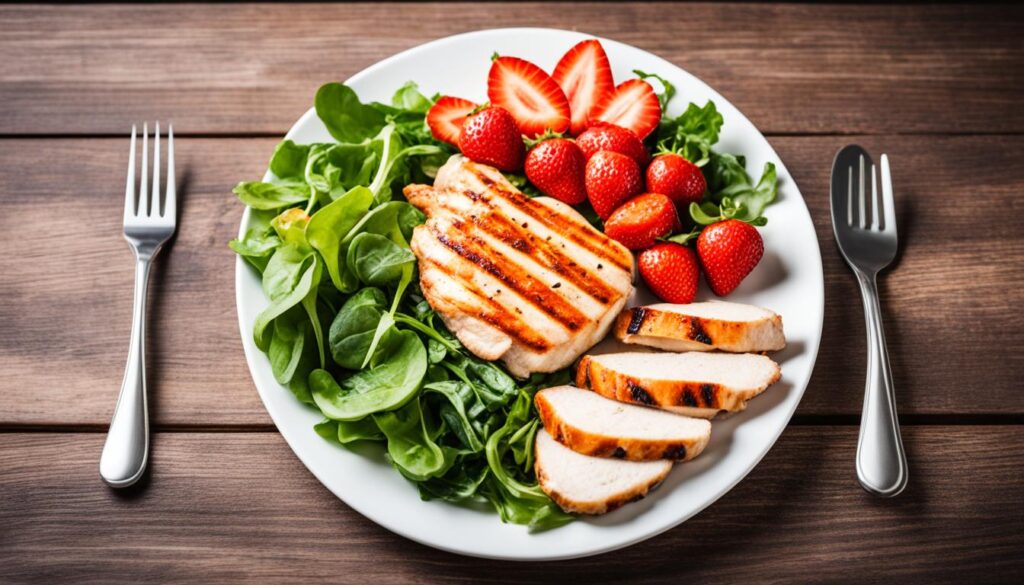
Phase 2 of the HCG Diet, also known as the “Fat Burn” phase, is a crucial period in which individuals follow a strict calorie restriction and utilize the HCG hormone nasal spray. This phase begins on Day 3 and lasts until Day 21, and it plays a significant role in promoting weight loss.
To achieve optimal results during Phase 2, it is essential to strictly adhere to the recommended foods and avoid any that are not listed. The diet primarily consists of lean proteins, vegetables, and fruits, with limited options for starches.
Lean proteins: Chicken breast, beef, white fish, lobster, crab, and shrimp are among the permitted lean protein sources during Phase 2. It is important to weigh all meats before cooking and remove any visible fat to stay within the prescribed caloric limits.
Vegetables and fruits: Spinach, tomatoes, strawberries, and grapefruit are some examples of the vegetables and fruits allowed during Phase 2. These provide essential nutrients while keeping the calorie intake low.
Starches: Starches are limited to specific options such as Melba toast and certain crackers. It is crucial to carefully measure and control portion sizes to avoid exceeding the prescribed daily caloric limit.
By combining the low-calorie diet with the HCG hormone, the body is encouraged to burn stored fat for energy, resulting in fat loss. The HCG hormone also helps suppress appetite, making it easier to adhere to the calorie restrictions.
Following the guidelines of Phase 2 and consuming the recommended foods will ensure that individuals experience effective fat burning and continue progressing towards their weight loss goals.
What to Avoid while Taking HCG
While on the HCG Diet Phase 2, it is important to avoid certain substances and activities to ensure optimal results. By following these guidelines, you can maximize the effectiveness of the HCG hormone and support your weight loss journey.
Avoid Oil-Based Products
It is crucial to steer clear of any form of oil, including those found in shampoos, lotions, toothpaste, makeup, and deodorants. These oil-based products can interfere with the HCG hormone and hinder the fat-burning process. Instead, choose mineral-based cosmetics and opt for liquid makeup that is oil-free. By sticking to oil-free products, you can minimize the risk of any unwanted oil absorption through your skin.
Say No to Massages
While a massage may seem relaxing, it is not recommended during the HCG Diet Phase 2. Massages often involve the use of oils and lotions, which can be counterproductive to your weight loss goals. The oil and lotions used during massages can be absorbed through your skin, interfering with the HCG hormone’s ability to burn stored fat. It is best to avoid massages during this phase to ensure optimal results.
Avoid Sunbathing
During the HCG Diet Phase 2, it is advisable to avoid sunbathing. Sunburn can cause water retention, leading to temporary weight gain and interference with your progress. If you do spend time in the sun, make sure to use sun protection and avoid prolonged exposure to prevent any negative impact on your weight loss journey.
Exercise with Caution
Moderate exercise is allowed during the HCG Diet Phase 2, but it is essential to listen to your body and make adjustments if necessary. If you notice that your weight loss is not progressing as desired, it might be helpful to pause or reduce your exercise routine temporarily. This can help you determine if the exercise is affecting your calorie consumption or causing any plateaus. Always consult with a healthcare professional before making any significant changes to your exercise routine while on the HCG Diet Phase 2.
By avoiding oil-based products, massages, excessive sun exposure, and carefully monitoring your exercise routine, you can support the effectiveness of the HCG hormone in burning stored fat and achieving your weight loss goals.
Plateau Breakers
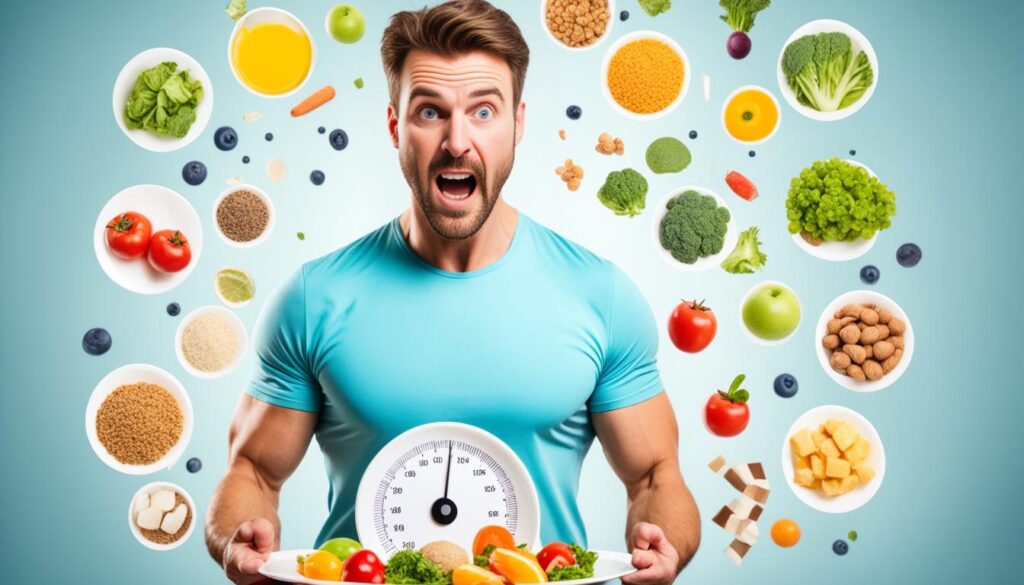
If weight loss plateaus during the HCG Diet Phase 2, there are several strategies that can help break through the stagnant progress. Below are some recommended plateau breakers:
- Increase water intake: Aim for 6-8 glasses of water per day to stay hydrated and aid in digestion.
- Boost protein intake: Add an extra 0.5 ounces of lean protein to your daily meals to increase satiety and support muscle development.
- Limited apple days: Restrict apple consumption to a maximum of six apples in a day. Apples are known to have natural diuretic properties that can help break through plateaus.
- Reduce beef consumption: If you’ve been consuming beef regularly, try reducing its intake as it may contribute to water retention and slow down weight loss.
- Check condiments for hidden sugars: Inspect condiments and dressings for added sugars, which can hinder progress. Opt for sugar-free or homemade alternatives.
- Avoid mixing vegetables: Some individuals experience better results by avoiding mixing vegetables in a single meal. Stick to single-ingredient vegetable servings to optimize digestion.
- Eliminate breadsticks: While breadsticks are allowed in the HCG Diet Phase 2, eliminating them for a few days can help break through a plateau. Reintroduce them back into your diet if needed.
- Ensure no additives in protein sources: Double-check that your protein sources don’t contain any unwanted additives or hidden ingredients that could stall progress.
- Reach the ideal weight range: It’s possible that you’ve reached your body’s ideal weight range during the HCG Diet Phase 2. Consult with your healthcare professional or HCG Diet expert to determine whether you should adjust your goals or proceed to the next phase.
- Consider lifestyle changes or medication adjustments: Review your daily routine, exercise habits, stress levels, and any medications you’re taking. Sometimes, slight adjustments or changes can help revitalize weight loss.
Remember, every individual’s body responds differently to the HCG Diet Phase 2. It’s important to track your progress, make necessary adjustments, and stay focused on your goals. Don’t get discouraged if you experience a plateau; instead, approach it as an opportunity to fine-tune your eating habits and enhance your weight loss journey.
| Plateau Breakers | How It Helps |
|---|---|
| Increase water intake | Aids in digestion and hydration |
| Boost protein intake | Increases satiety and supports muscle development |
| Limited apple days | Utilizes natural diuretic properties for breaking through plateaus |
| Reduce beef consumption | Reduces water retention and potential weight loss obstacles |
| Check condiments for hidden sugars | Avoids added sugars that can hinder progress |
| Avoid mixing vegetables | Optimizes digestion by allowing single-ingredient servings |
| Eliminate breadsticks | Temporarily removes potential obstacles for plateau-breaking |
| Ensure no additives in protein sources | Avoids hidden ingredients that may stall progress |
| Reach the ideal weight range | Consultation with professionals to assess next steps |
| Consider lifestyle changes or medication adjustments | Review of routine, exercise habits, stress, and medication |
Phase 3 (Maintenance Phase)
Phase 3 of the HCG Diet, also known as the Maintenance Phase, is a crucial stage that lasts for three weeks. During this phase, individuals can reintroduce a wider variety of foods into their diet, with the exception of sugar and starch. The goal of the Maintenance Phase is to stabilize and maintain the weight reached at the end of Phase 2 while establishing healthy eating habits for the long term.
To ensure success during the Maintenance Phase, it is important to follow these guidelines:
Weight Monitoring
It is advisable to weigh yourself every morning and ensure that your weight stays within 1 kilogram of your weight on the last day of using the HCG hormone. Regular monitoring allows you to make adjustments if necessary and helps you stay on track.
Carbohydrate Avoidance
In Phase 3, it is essential to avoid carbohydrates, including grains, bread, pasta, and starchy vegetables. This restriction helps maintain the body’s improved insulin sensitivity and minimizes the risk of weight regain.
Liberal Fat Consumption
During this phase, individuals can consume fats more liberally. Healthy fats from sources such as avocados, nuts, seeds, and olive oil can be incorporated into meals. However, moderation is key, and it is important to maintain a balanced approach to fat intake.
Alcohol in Moderation
In the Maintenance Phase, alcohol in small quantities is permitted. A glass of wine with meals can be enjoyed, but excessive alcohol consumption should be avoided as it may interfere with weight maintenance goals.
Caloric Intake
The recommended caloric intake for females during the Maintenance Phase is between 800 and 1200 calories per day, depending on factors such as activity level and metabolism. For males, the recommended range is between 1200 and 1500 calories per day. It is important to customize your caloric intake based on your individual needs.
Exercise and Sleep
Exercise can be reintroduced during the Maintenance Phase to support overall health and well-being. Aim for regular physical activity that aligns with your fitness level and goals. Additionally, maintaining good sleep habits is crucial for optimal weight management and overall wellness.
Apple Cider Vinegar
Some individuals find that incorporating apple cider vinegar into their daily routine during the Maintenance Phase helps support digestion and weight management. Consider adding a tablespoon of apple cider vinegar to water or salad dressings for potential benefits.
The Maintenance Phase sets the foundation for long-term success and healthy eating habits. By following the guidelines and recommendations of Phase 3, individuals can maintain their weight loss and achieve sustainable results.
Phase 4 (The Rest of Your Life)
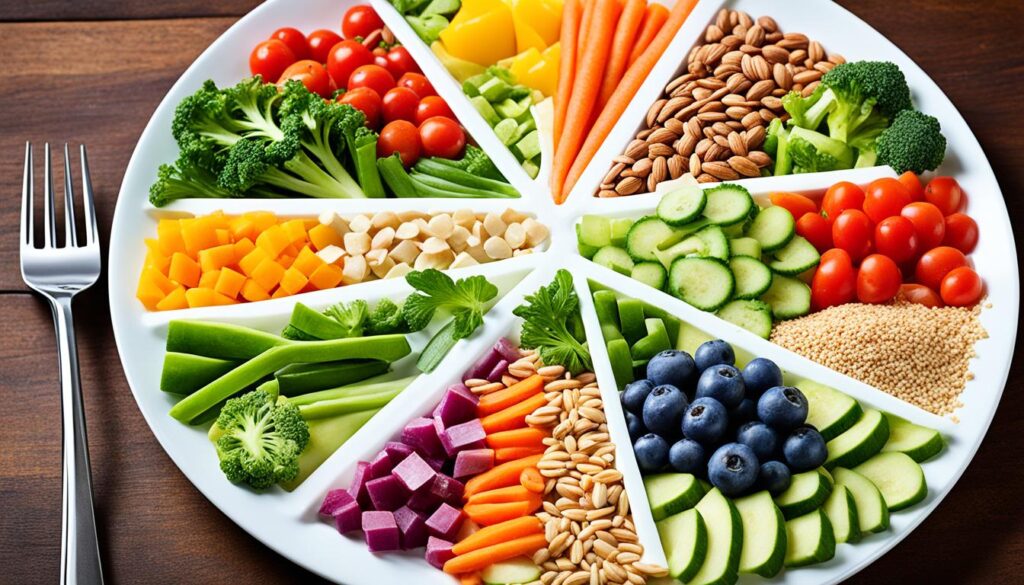
Phase 4 of the HCG Diet is the long-term maintenance phase that continues for the rest of one’s life. During this phase, individuals can eat anything they please, except for sugar and starch. It is crucial to weigh oneself every morning and ensure that the weight stays within 1 kilogram of the weight reached on the last day of using the HCG hormone. Carbohydrates should be avoided, while fats can be consumed in moderation. It is important to observe portion control and continue healthy habits. Regular exercise and good sleep habits should be maintained to support lasting weight management.
After completing the HCG Diet Phase 2, you enter Phase 4, which is commonly referred to as the maintenance phase. This phase is designed to help you sustain the weight loss you achieved during the previous phases and maintain a healthy lifestyle in the long term. In Phase 4, you have more flexibility in your food choices, but it’s important to remember that certain foods should still be avoided to prevent weight regain.
In Phase 4, you can enjoy a wide variety of foods, as long as they do not contain sugar or starch. This means you can include lean proteins, fresh vegetables, and healthy fats in your meals. It’s essential to focus on portion control and listen to your body’s hunger and fullness cues. By making mindful food choices and practicing moderation, you can maintain your weight and continue improving your overall health.
While carbohydrates should be limited, healthy fats can be included in moderation. Fats such as avocados, nuts, and olive oil provide essential nutrients and can help you feel satisfied after meals. It’s important to pay attention to portion sizes and choose high-quality fats to support your body’s nutritional needs.
Continuing regular exercise is also crucial during Phase 4. Exercise helps maintain muscle mass, increases metabolism, and promotes overall well-being. Aim for a combination of cardio and strength training exercises to keep your body strong and healthy.
Good sleep habits, including getting enough sleep each night, are also essential for long-term weight management. Quality sleep helps regulate hormones, improves mood, and supports overall health. Make sleep a priority and establish a consistent sleep routine to ensure optimal well-being.
By following the guidelines of Phase 4 and incorporating healthy habits into your daily life, you can maintain your weight loss and enjoy the benefits of a healthier, more balanced lifestyle. Remember, this phase is not a temporary solution but a lifelong commitment to your health and well-being.
Take control of your health and embrace the freedom that Phase 4 brings. With a balance of nutritious foods, regular exercise, and self-care, you can successfully maintain your weight loss and continue living a happier, healthier life.
Stay committed, stay consistent, and continue making choices that support your overall well-being. The HCG Diet Phase 4 is the beginning of your lifelong journey towards optimal health and sustainable weight management.
| Phase 4 Guidelines | Food Recommendations | Food Avoidances |
|---|---|---|
| Carbohydrates | Limit consumption | Sugar, starch |
| Fats | Moderate consumption | Unhealthy fats, processed oils |
| Proteins | Lean sources | N/A |
| Vegetables | Fresh, non-starchy options | Starchy vegetables |
| Exercise | Regular physical activity | N/A |
| Sleep | Quality, adequate rest | N/A |
Recommended Foods for Phase 4
- Lean proteins: Chicken breast, turkey, fish, lean cuts of beef or pork
- Fresh vegetables: Leafy greens, cruciferous vegetables, cucumber, bell peppers
- Healthy fats: Avocado, olive oil, nuts, seeds
- Natural sweeteners: Stevia, monk fruit extract
Foods to Avoid in Phase 4
- Sugar: Candy, soda, baked goods, sugary beverages
- Starch: Bread, pasta, rice, potatoes
- Processed oils: Vegetable oil, canola oil, margarine
Allowable Foods
The HCG Diet Phase 2 allows specific foods to be consumed. It is important to follow the guidelines and choose organic and non-GMO options when possible. Here is a list of the allowable foods during this phase:
Lean Proteins:
- Chicken breast
- Beef
- White fish
- Lobster
- Crab
- Shrimp
- Select vegetarian options
Vegetables:
- Spinach
- Tomatoes
- Celery
- Asparagus
- Cucumbers
- And more…
Fruits:
- Strawberries
- Grapefruit
- Apples
- Oranges
- And more…
Starches:
- Melba toast
- Certain crackers
- Shirataki noodles
In addition to these foods, fresh herbs, spices, lemon juice, coffee, tea, sparkling water, milk (limited), and stevia (a natural sweetener) can be used in moderation to enhance flavor. It is important to follow portion sizes to ensure the calorie intake remains within the recommended limits for successful weight loss.
Recipes
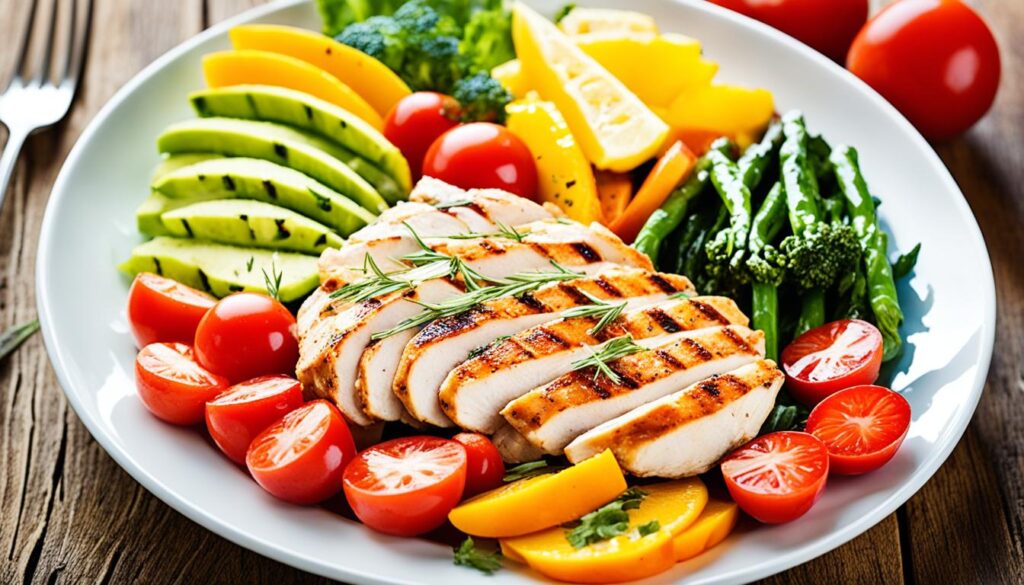
The HCG Diet Phase 2 recipes offer a variety of delicious options that adhere to the calorie restrictions and allowed foods of the diet. These recipes provide creative ways to incorporate lean proteins, vegetables, and fruits into flavorful meals. They can help make the diet more enjoyable and prevent boredom with food choices. From simple salads and grilled chicken to creative stir-fries and protein-packed frittatas, there are recipes to suit every taste and preference.
Sample Recipe: Grilled Chicken Salad
Ingredients:
- 100g grilled chicken breast
- 2 cups mixed greens
- 1/2 cucumber, sliced
- 1/4 cup cherry tomatoes, halved
- 1/4 cup sliced red onions
- 1 tablespoon lemon juice
- Salt and pepper to taste
Instructions:
- In a large bowl, combine the mixed greens, cucumber, cherry tomatoes, and red onions.
- Season the grilled chicken breast with salt, pepper, and lemon juice.
- Place the grilled chicken on top of the salad.
- Toss all the ingredients together until well combined.
- Enjoy the refreshing and satisfying grilled chicken salad!
You can find more delicious HCG Diet Phase 2 recipes that align with the calorie and food restrictions of the diet. These recipes will help you stay on track and make your weight loss journey a flavorful and enjoyable one.
Measurement Charts

Tracking your progress is crucial during the HCG Diet Phase 2. Measurement charts provide a visual representation of your body reshaping journey and help you stay motivated throughout the diet.
Start by recording your measurements at the beginning of Phase 2, and continue tracking every two weeks, four weeks, and six weeks. Take measurements of your bust, waist, hip, inner thigh, and bicep areas. By consistently measuring these areas, you can monitor your body’s transformation and celebrate your achievements along the way.
Here is an example of a measurement chart:
| Date | Bust (inches) | Waist (inches) | Hip (inches) | Inner Thigh (inches) | Bicep (inches) |
|---|---|---|---|---|---|
| Start | 36 | 30 | 40 | 22 | 12 |
| 2 Weeks | 35 | 29 | 39 | 21 | 11 |
| 4 Weeks | 34 | 28 | 38 | 20 | 10 |
| 6 Weeks | 33 | 27 | 37 | 19 | 9 |
Make sure to measure consistently, ideally at the same time of day and under similar conditions. Seeing your progress on paper can be incredibly motivating, and the measurement chart will serve as a visual reminder of how far you’ve come throughout your HCG Diet Phase 2 journey.
Quote:
“Tracking your body measurements is a powerful way to stay motivated and committed to your HCG Diet Phase 2. It allows you to see tangible results and reminds you of the progress you’re making towards your weight loss goals.”
Tracking Chart
![]()
A tracking chart is an essential tool for monitoring progress and maintaining accountability during the HCG Diet Phase 2. By recording daily weight measurements and jotting down notes or observations, individuals can gain valuable insights into their weight loss journey and make necessary adjustments to their diet or lifestyle. Tracking not only weight but also hunger levels, energy levels, and any challenges faced can help identify patterns and provide a clearer picture of progress.
Using a simple spreadsheet or printable tracking chart, individuals can easily record and visualize their progress over time. The chart can include columns for the date, starting weight, daily weight measurements, and any notes or observations. This allows for a comprehensive overview of the entire Phase 2 journey.
Benefits of Using a Tracking Chart:
- Provides a visual representation of weight loss progress
- Helps identify weight loss patterns and plateaus
- Allows for better understanding of how various factors may impact weight loss, such as hunger levels or energy levels
- Encourages accountability and motivation
- Aids in making necessary adjustments to the diet or lifestyle for optimal results
Here is an example of a tracking chart:
| Date | Starting Weight (lbs) | Daily Weight (lbs) | Notes/Observations |
|---|---|---|---|
| Day 1 | 150 | 149 | No cravings today |
| Day 2 | 149 | 148 | Felt a bit tired in the afternoon |
| Day 3 | 148 | 147 | Increased energy levels today |
| Day 4 | 147 | 147 | Stuck to the recommended foods completely |
| Day 5 | 147 | 146 | Felt a slight hunger pang in the evening |
As seen in the example, the tracking chart allows for a clear visualization of weight fluctuations and provides an opportunity to note any observations or challenges faced on a given day. By consistently updating the chart, individuals can better track trends, adjust their diet or exercise routine if needed, and stay motivated throughout the HCG Diet Phase 2.
Conclusion
The HCG Diet Phase 2 is a crucial and effective component of the overall HCG weight loss protocol. By strictly following the recommended calorie guidelines and adhering to the allowed foods, individuals can achieve significant weight loss results. This phase requires consuming only 500 calories per day while using the HCG hormone, which facilitates fat burning and appetite suppression.
For optimal results during this phase, it is important to track progress diligently and stay hydrated by drinking plenty of water. Additionally, it is essential to avoid oils and non-organic products, as they may hinder the diet’s effectiveness. Following the specific guidelines for each phase of the diet, including Phase 2, is crucial to achieving the desired weight loss goals.
By committing to the HCG Diet Phase 2 and adhering to the prescribed calorie restrictions, individuals can not only achieve their weight loss goals but also improve their overall health and well-being. The combination of the low-calorie diet and the use of the HCG hormone allows the body to burn stored fat for energy and helps suppress appetite.
With dedication, commitment, and adherence to the HCG weight loss protocol, individuals can successfully navigate through the HCG Diet Phase 2, experience significant weight loss, and embark on a journey towards a healthier and more fulfilling lifestyle.
FAQ
What is the daily calorie intake during HCG Diet Phase 2?
The daily calorie intake during HCG Diet Phase 2 is restricted to 500 calories per day.
What is Phase 1 of the HCG Diet?
Phase 1, also known as “The Start,” involves two days of excessive eating or gorging/loading to build up fat reserves in the body.
What is Phase 2 of the HCG Diet?
Phase 2, also known as the “Fat Burn” phase, lasts from Day 3 to Day 21 and involves consuming only 500 calories per day while using the HCG hormone nasal spray.
What should be avoided while taking HCG?
It is important to avoid any form of oil, including those found in shampoos, lotions, toothpaste, makeup, and deodorants. Sunbathing and massages should also be avoided.
What can be done to break through a plateau during HCG Diet Phase 2?
Strategies to break through a plateau include increasing water intake, increasing protein intake, reducing beef consumption, checking condiments for hidden sugars, and considering lifestyle changes or medication adjustments.
What is Phase 3 of the HCG Diet?
Phase 3, known as the “Maintenance Phase,” lasts for three weeks and involves eating any food except for sugar and starch.
What is Phase 4 of the HCG Diet?
Phase 4 is the long-term maintenance phase that continues for the rest of one’s life. During this phase, individuals can eat anything they please, except for sugar and starch, while observing portion control.
What foods are allowed during HCG Diet Phase 2?
Lean proteins like chicken breast, beef, white fish, lobster, crab, and shrimp, specific vegetables and fruits, limited starches, fresh herbs, spices, lemon juice, coffee, tea, sparkling water, milk (limited), and stevia can be consumed during HCG Diet Phase 2.
Are there any recipes available for HCG Diet Phase 2?
Yes, there are various recipes available that adhere to the calorie restrictions and allowed foods of HCG Diet Phase 2, providing creative and flavorful meal options.
Why are measurement charts important during HCG Diet Phase 2?
Measurement charts help individuals track their body reshaping progress by recording measurements at specific intervals, such as bust, waist, hip, inner thigh, and bicep areas.
Is there a tracking chart available for HCG Diet Phase 2?
Yes, a tracking chart is available to monitor daily progress, including weight, hunger levels, energy levels, and other factors during HCG Diet Phase 2.
What is the purpose of HCG Diet Phase 2?
The purpose of HCG Diet Phase 2 is to facilitate fat burning and weight loss by combining a low-calorie diet with the use of the HCG hormone, leading to significant weight loss results.



